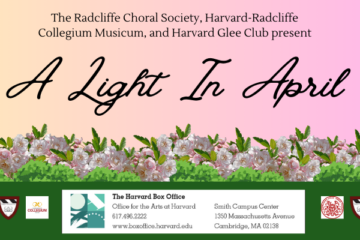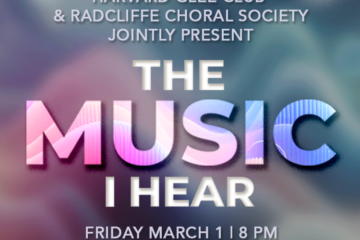Dan Locklair | The Harvard/Ashmont Evening Service (2023)

Dates and Times:
Thursday, March 23, 2023 | 5:30 PM | Harvard Memorial Church
Sunday, March 26, 2023 | 4:00 PM | Ashmont Church
THE HARVARD/ASHMONT EVENING SERVICE (2023), for SATB and TTBB Choruses and Two Organs was composed during the spring and summer of 2022. It was commissioned by the Harvard Glee Club Alumni for the Harvard Glee Club, and it is dedicated to the Harvard Glee Club (Dr. Andrew Clark, conductor) and to the Choir of Men and Boys of the Parish of All Saints, Ashmont, in Dorchester, MA (Mr. Andrew Sheranian, Organist and Master of Choristers). In addition to the primary canticles, Magnificat and Nunc Dimittis, the commission requested two additional pieces: An introit for SATB Chorus, a cappella, SEEK HIM, based on traditional opening sentences for even song from Amos 5:8, and a motet for TTBB Chorus, a cappella, SALVE REGINA, based on the traditional Latin Marian antiphon of the same name.
THE HARVARD/ASHMONT EVENING SERVICE (2023) was commissioned to celebrate the life and work of Dr. Archibald T. Davison (1833-1961). Dr. Davison, after previously serving as organist at the Parish of All Saints Church, Ashmont, was the conductor of both the Harvard University Choir and Harvard Glee Club. Through his work with these institutions, and as faculty member of Harvard’s Department of Music, Davison championed music education at all levels. His powerful legacy includes books, articles, collections of scores, and a tradition of collaboration extending up to today through the Harvard Glee Club’s Archibald T. Davison Fellowship program, numerous joint musical projects, and new commissions. Owing to Dr. Davison’s vision and work, the rich and ongoing musical partnership between Harvard and the Parish of All Saints, Ashmont, continues.
The fundamental tonal center relationships in THE HARVARD/ASHMONT EVENING SERVICE (2023) stem from the whole-tone scale, even though the melodic and harmonic essence of both Magnificat and Nunc Dimittis lies with the Lydian mode. Underpinning the Nunc Dimittis is a descending whole-tone scale, heard in sustained pedal points over the duration of the piece. Not until near the end of the Nunc Dimittis is the sound of the whole-tone scale made obvious. Throughout Magnificat and Nunc Dimittis, dialogues and antiphonal writing between the choirs and organs abound, all with the intention of freshly heightening the meaning of these powerful ancient texts and creating a thrilling sound that embraces the congregation.


